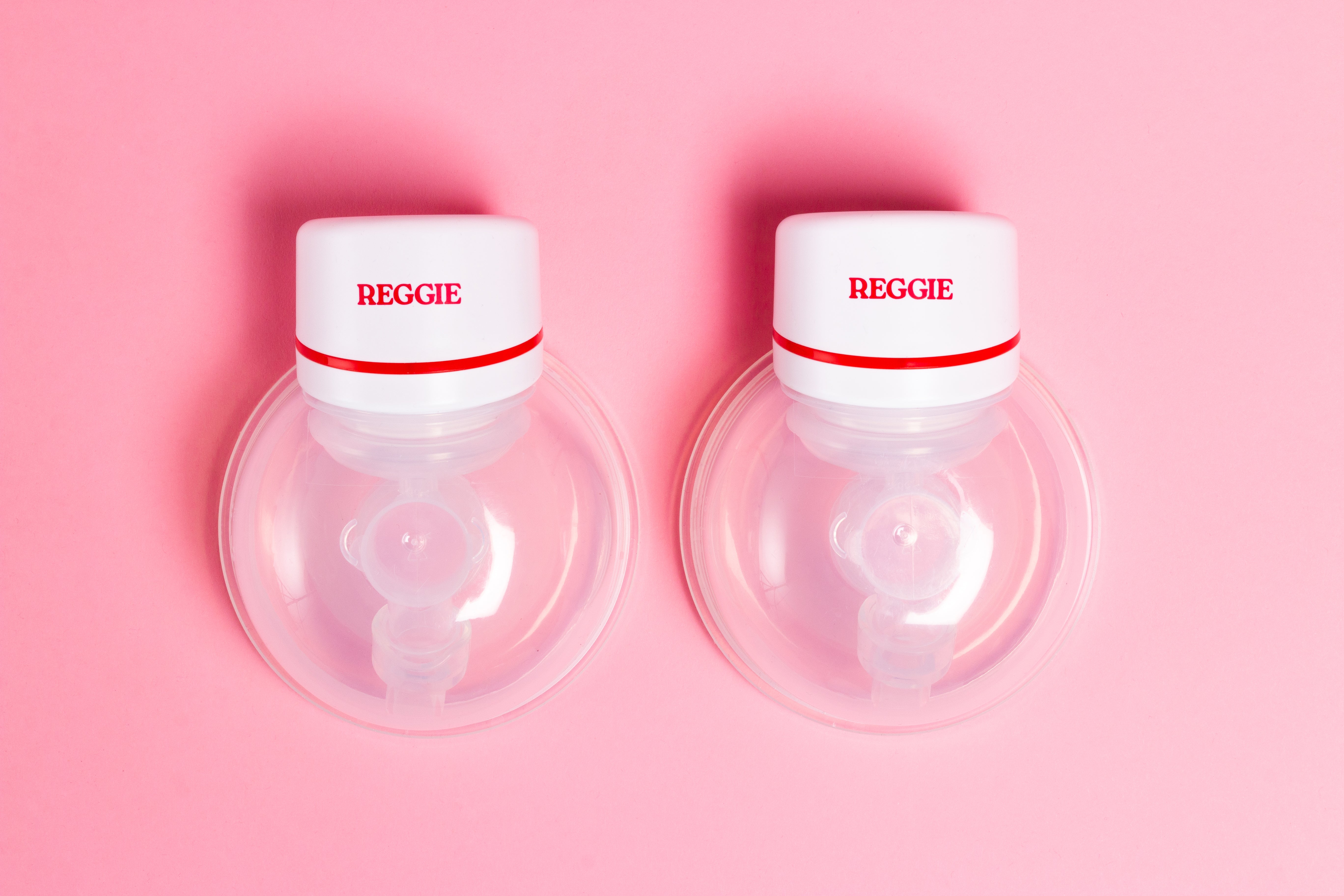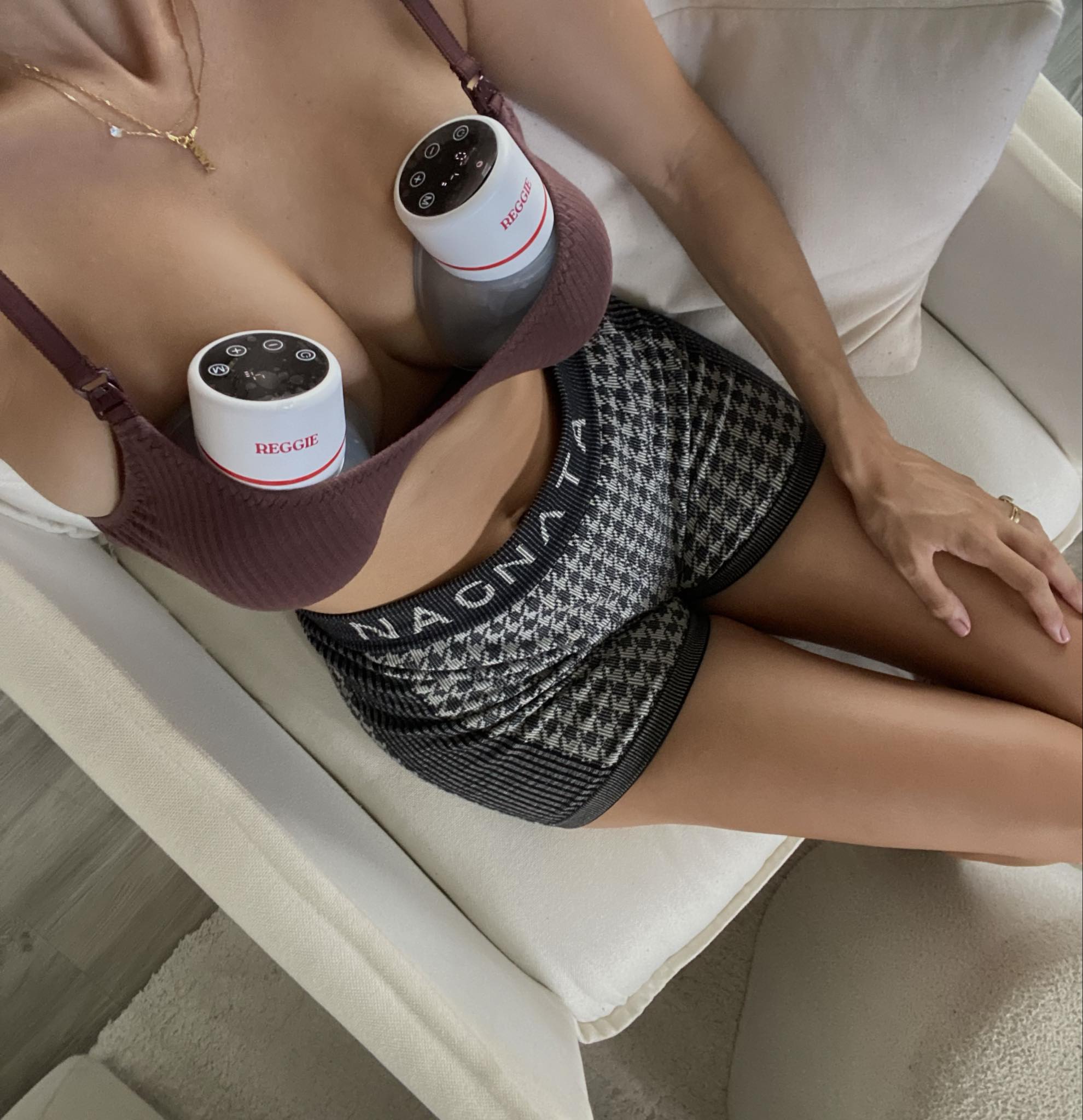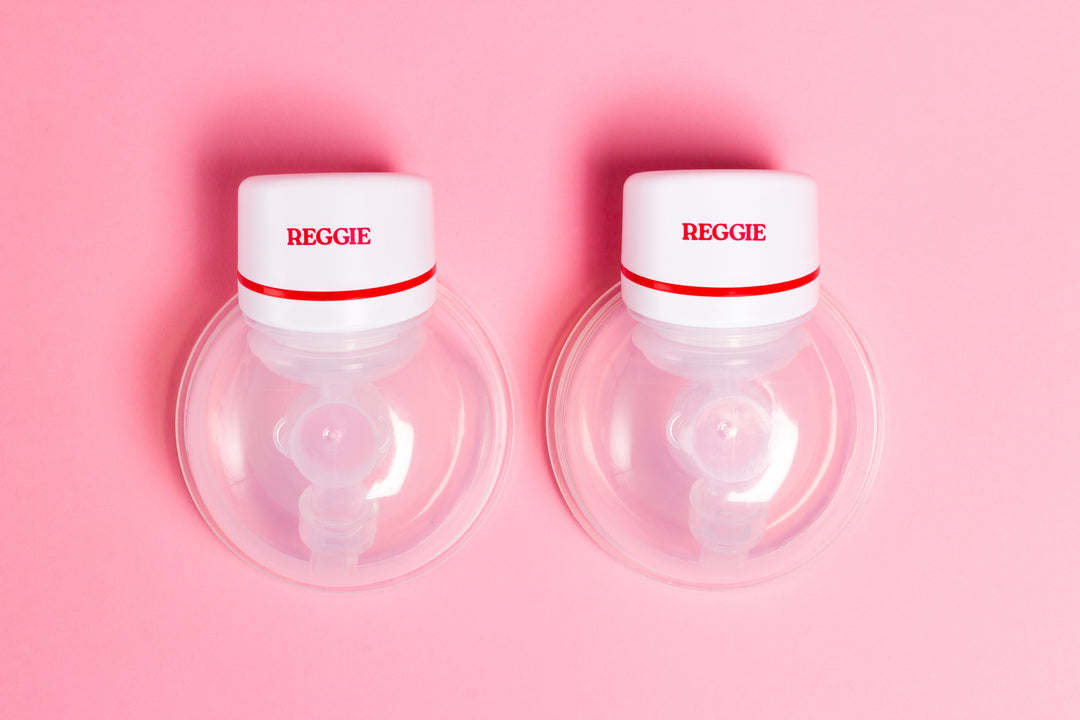Breast Pump Flange Sizes: Finding Your Perfect Fit
Did you know 68% of parents use the wrong breast pump flange size? This can lead to pain, nipple damage, and reduced milk output. The right flange size ensures comfort, prevents health issues, and improves milk flow - especially with wearable pumps.
Quick Takeaways:
- Measure your nipple diameter at rest and add 2-4mm for the correct flange size.
- Signs of a poor fit: pain, white-tipped nipples, weak suction, or reduced milk output.
- Reassess flange size every 2-3 weeks in the first months postpartum, as nipple size can change over time.
- For wearable pumps, focus on fit first, and use silicone inserts for adjustments.
Finding the right flange size can increase pumping efficiency by up to 50% and make your breastfeeding journey smoother. Let’s dive into how you can measure, adjust, and troubleshoot for the perfect fit.
How Flange Size Affects Pumping Success
Flange size plays a key role in how well a wearable pump works, especially when it comes to discreet and efficient milk expression.
How Flanges Work During Pumping
A breast pump flange forms a seal around the nipple and areola, creating negative pressure that imitates a baby's natural suckling motion. When the flange fits correctly, the nipple moves freely within the tunnel without rubbing against the sides, ensuring milk flows smoothly into the collection system.
For the best results, you need:
- A tight seal
- Free nipple movement
- Steady milk flow
These factors are even more important for wearable pumps, as a poor seal can cause leaks when you're on the move.
Problems from Wrong Flange Sizes
Using the wrong flange size can make pumping uncomfortable and reduce milk expression:
| Flange Issue | Impact on Pumping | Physical Signs |
|---|---|---|
| Too Small | Milk flow is blocked, ducts may clog | Nipple pain, chafing, blisters |
| Too Large | Suction is weak, milk output drops | Too much areola is pulled in |
When the flange is too small, it can cause painful friction and block milk flow. On the other hand, a flange that's too large can lead to weak suction and overstretched tissue.
To find the right size, measure your nipple diameter at rest and add 2-4mm to account for expansion during pumping.
The material of the flange also matters. Silicone works well for sensitive skin, while hard plastic maintains suction better during movement. For wearable pumps, focus on getting the size right first - many models include silicone inserts for added comfort.
Accurate sizing, which we'll cover next, helps you avoid these problems and adjusts for natural nipple changes over time.
Measuring Your Nipples for Correct Flange Size
Before You Start
Wait at least an hour after nursing or pumping before measuring. Make sure you're in good lighting and have clean hands. To get the most accurate measurement, gently stimulate your nipples to mimic the shape they take during pumping.
How to Measure
Grab a ruler or measuring tape with millimetre markings. Measure across the base of your nipple, but avoid including the areola in your measurement. For extra accuracy, you can use printable guides provided by pump manufacturers.
Sizing for Wearable Pumps
Wearable pumps often rely on inserts instead of full flange replacements. When choosing your size:
- If you're between sizes, go with the next larger option.
- Comfort should always come first, even over exact measurements.
Measure each breast separately every month. It's normal for breasts to differ in size, so they may need different flange sizes. If you're still having trouble finding the right fit, the next section will guide you on solving fit issues.
How to Fix Common Flange Fit Issues
Signs Your Flange Doesn't Fit
Experiencing pain while pumping or noticing white-tipped nipples? These are clear signs your flange might be too small. On the other hand, if your flange is too large, it can weaken suction by pulling in over 3mm of areola, which may reduce milk output.
Keep an eye on your nipples after each pumping session for any changes in shape or colour - these can also indicate an issue with fit.
Simple Solutions for Better Fit
You can often address flange fit issues with a few simple tweaks. For quick relief, try applying a little food-grade lanolin or coconut oil to minimise friction during pumping.
Cushion inserts can also help. For instance, BeauGen cushions reduce flange size by 2-3mm and create a softer surface, making them a great option if you're between sizes.
Here are some practical tips to improve comfort and efficiency:
- Position Adjustment: Always ensure your nipple is perfectly centred in the flange tunnel before starting.
- Suction Management: Begin with lower suction settings and gradually increase until you find a level that's both comfortable and effective.
- Temperature Tips: Use a warm compress before pumping to encourage better milk flow.
These small adjustments can make a big difference, especially as your body changes throughout breastfeeding - a topic we'll dive into next.
sbb-itb-08733ff
Managing Size Changes During Breastfeeding
Why Nipple Size Changes
Your flange size might need to change as you continue breastfeeding - and here’s why. Nipples naturally shift in size and shape throughout the breastfeeding journey. Hormones, milk production, and pumping routines all play a role. For instance, during milk let-down, nipples can temporarily swell by 2-3mm in diameter . This means the flange that fits perfectly today might not work as well in a few weeks.
Several factors can influence these changes:
- Hormonal changes: Postpartum hormones can lead to temporary swelling .
- Time of day: Some mums notice their nipple size varies between morning and evening .
- Pumping habits: Frequent pumping may cause temporary swelling .
Benefits of Multiple Flange Sizes
Keeping a variety of flange sizes available can make pumping more comfortable and effective. The right fit helps maintain milk flow and avoids discomfort. Many wearable pumps now come with flexible flange designs to adjust as needed.
Here’s when you should check your flange size:
| Timeframe | What to Do |
|---|---|
| First 3 months | Reassess every 2-3 weeks |
| After 3 months | Reassess every 2-3 months |
| Immediately | If you experience discomfort or notice changes in milk output |
To stay on top of these changes, consider the following tips:
- Keep a pumping log to track comfort and milk output.
- Use inserts for small size adjustments.
- Look out for redness or uneven milk drainage .
This is especially important for wearable pump users since the fit can affect how discreetly and effectively the pump works.
Reggie Baby Pumps: Features and Sizing

Reggie Baby Pump Features
When it comes to wearable pumps, getting the right flange size is crucial due to their compact design. The Reggie Baby system tackles this with a smart design that prioritises both comfort and efficiency. Weighing just 210g, the Reggie Baby wearable pump offers 9 suction levels and 5 expression modes, carefully designed to replicate natural nursing patterns. Plus, its companion app makes it easy to track your pumping sessions. All components are made with food-grade materials for added safety.
Reggie Baby Flange Options
Reggie Baby provides flange options to suit a range of nipple sizes, ensuring a proper fit for every user. The standard package includes 24mm flanges, but you can also purchase 21mm and 27mm sizes separately. The sizing system follows the widely-used guideline of adding 4mm to your nipple diameter.
| Nipple Diameter (Before Pumping) | Recommended Flange Size | Additional Notes |
|---|---|---|
| 15-19mm | 21mm | Best for smaller nipples |
| 20-24mm | 24mm | Standard size included in package |
| 25-28mm | 27mm | Fits larger nipples |
The silicone flanges are designed to provide a snug, comfortable seal while maintaining strong suction. For added flexibility, interchangeable inserts allow you to adjust flange sizes as your needs change during breastfeeding. This modular design supports the natural variations in nipple size over time, eliminating the need for frequent replacements.
"The Reggie Baby pump's flange sizing system is designed specifically for their wearable pumps, taking into account the unique requirements of a compact, portable design."
The pump also comes with a one-year warranty, offering peace of mind for users.
Conclusion: Getting the Right Fit
Initial measurements are just the starting point. Recheck your flange size every 2-3 weeks as your breastfeeding journey evolves. The right flange fit ensures your nipple moves freely with minimal areola involvement, helping to avoid discomfort and maintain milk flow. Pain, redness, or a drop in milk production are clear signs it’s time to reassess your fit.
Make it a habit to revisit your nipple measurements monthly, using the methods shared earlier. Keeping a close eye on fit can help you stay ahead of potential problems and keep pumping as effective as possible.







Leave a comment